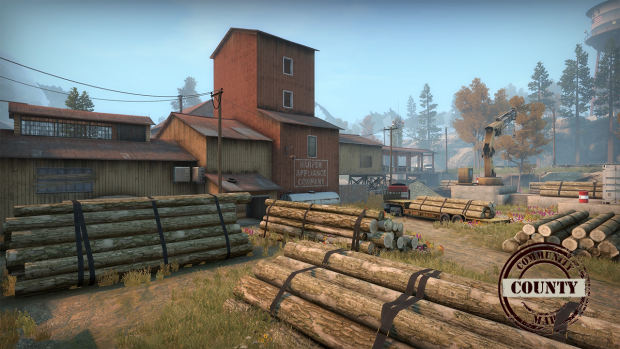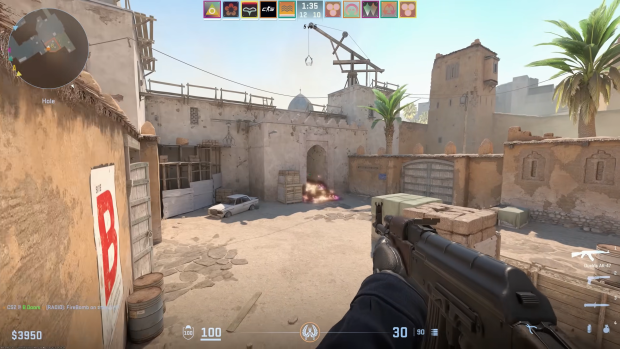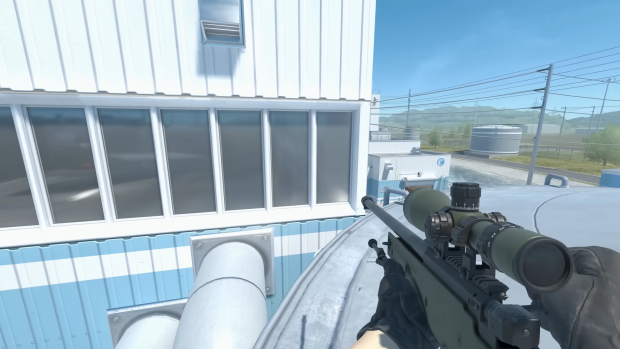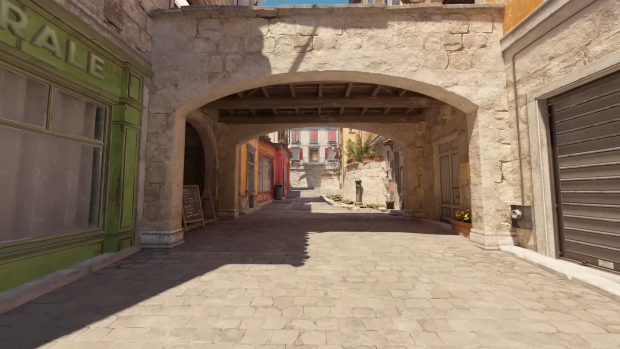After years of teasing, strings being leaked, and community speculation running rampant, Valve has finally announced an upgrade of Counter-Strike: Global Offensive onto the Source 2 engine, receiving a rebranding to Counter-Strike 2. One of the seminal mods in gaming, we're going to take a look back at the series so far in anticipation of this summer's upcoming release!
Striking Out
Counter-Strike's origins are pretty famous throughout the modding scene - a total conversion of Half-Life by Minh Le, whose origins in Quake modding made his transition to Valve's goldsrc engine reasonably smooth. Before he kicked off development of the actual mod, character models came first in advance of an official SDK, and then, in June of 1999, after much hyping of another project from Minh, Counter-Strike released its first beta, premiering the mod and its hostage rescue game-mode.
Seven major betas in total would release for Counter-Strike before it went retail, with the famous bomb defusal mode - now generally regarded as the CS standard - not making it in until fourth beta period. By the time the seventh and final major update launched, Valve had sealed the deal on shipping a CS 1.0 as part of a collection with Half-Life, and 1.0 went gold in November 2000. Several updates shipped featuring bug fixes, new content, and new maps until the iconic (and final) CS 1.6 update launched in September 2003.
CS 1.6 is not the only Counter-Strike game on the goldsrc engine - a few spinoffs like Condition Zero or Nexon: Zombies (now Nexon: Studio) experimented with different formats of the CS DNA with varying degrees of success. With integration in the Steam client, 2003 also saw a major reveal of the Source Engine, both at E3 and in the leak of that year - and in the following year's E3, we'd see the successor to CS 1.6.
Sourcey Advancements
2004 was a big year for Valve - doubling down on the Steam client, and releasing the long-awaited sequel to Half-Life. But, despite its famous use of Source, HL2 was not the first time players and modders got their hand on the engine; instead, that title went to Counter-Strike: Source, which had beta access released in August of 2004. Effectively a remaster of CS 1.6 with remade maps, models, and more, it was a far cry from the comparatively lesser Half-Life: Source and the effort that went into lovingly restoring a classic is what has given it so much permanence today.
CSS was another slam-dunk as far as competitive shooters go and being on the cutting-edge Source Engine, it provided plenty of excitement in the run-up to an official release, where it was bundled with Half-Life 2. Custom servers and communities for CSS defined its impact on the multiplayer scene, with mods ranging from simple reskins to gameplay overhauls, and the popular "surf" gameplay first pioneered in CS 1.6 also blew up in the sequel. More and more, Counter-Strike was dominating gaming discourse and competing with other tactical shooter franchises of the time like ARMA and Rainbow Six for title of most demanding competitive shooter.
The older titles in the CS franchise continue to have dedicated player bases that belie the age of the games. Some people have been playing Counter-Strike for over twenty years and have no intention of moving on. For many, though, there was a big switch-up coming - one that would set the trajectory of Counter-Strike for over a decade, and cement it as one of the biggest names in E-Sports.
A Global Phenomenon
Counter-Strike: Global Offensive (at one point titled Counter-Strike 2, though the moniker would later go to its own successor) had humble beginnings as a mere console port of Counter-Strike: Source, headed by Hidden Path Entertainment. In 2010, Valve began to see the value in making CSGO the next chapter of the franchise instead, and so a full rework of the premise began. First revealed in 2011, the public would be able to get their hands on the game in November that year - more than seven years after its predecessor's release - and a full release of the game came in August 2012.
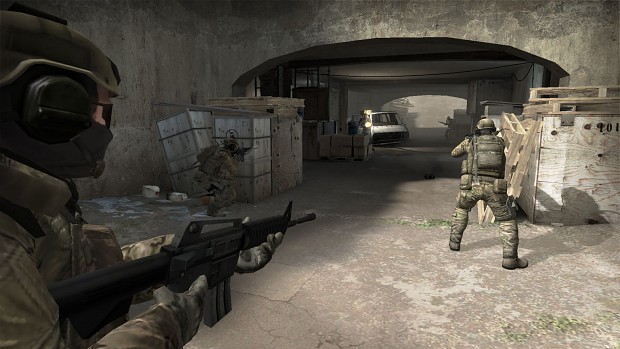
CSGO went on to have the richest update history of perhaps any of Valve's games besides Team Fortress 2 in its heyday, receiving multiple new weapons, maps, and in 2013, the addition of skins. Skins created a whole new type of virtual economy surrounding CSGO, something Valve had already had earlier success with in TF2's hats, and are perhaps the most important factor contributing to the game's continued relevance besides its timeless, nail-biting gameplay. CSGO also became something of a platform for artists and creators, with almost every update featuring community content prominently (whether they be maps, music, or new skins) and landing semi-regularly. CSGO is harder to mod, but even so, it has seen some remarkable mods on-site like NOBLE Strike.
In the drought of new Valve releases during most of the 2010s, CSGO was a notable exception; and whilst Source 2 had already been tested in DOTA 2, Half-Life would get its day with Half-Life Alyx. For a while before and in the years since, rumours had circulated that the next big thing on Source 2 would be Counter-Strike itself, and for years, these rumours languished in Valve's special brand of development hell...until March 22nd, 2023.
Second Coming
Counter-Strike 2 received a (somewhat) surprise announcement yesterday, featuring a load of videos demonstrating new features, images showing off the power of Source 2, and technical breakdowns that reveal why Counter-Strike 2 - which will launch as a free upgrade for CSGO this Summer - might just be the thing Valve fans have been waiting for. Changing up the meta is one thing, but now that CS has a new engine to its name once again, the potential for expansion over the coming decade is substantial and cements Valve's commitment to the series.
So far, we've gotten a deep dive on the new smoke mechanics (which, whilst one small part of CS2's gameplay offering, seems to have received a huge amount of attention), another on the sub-tick system which is hoping to make latency a thing of the past, and how maps will transfer into the new engine. Some maps will be overhauled from scratch; some are receiving touch-ups to carry them into a new age; and some, like good ol' Dust 2, are being preserved largely as they are, just benefitting from Source 2's improved lighting engine.
Source 2 brings exciting opportunities forwards for modders, who up to now were stuck either modding DOTA 2 or HLA (or a lucky select few getting S&Box in closed access). CS2 marks the first officially flat-screen FPS release on the Source 2 engine by Valve and has a more cutting-edge modern workflow for models, maps, and other content. Skins will be preserved to keep the economy's heart beating, though future skins added to the game could now take advantage of higher-fidelity weapon models and new texturing techniques.
The 2020s have been a decent period for Valve fans hoping to eat well again, with the release of Half-Life Alyx, Aperture Desk Job, and now, the upcoming release of Counter-Strike 2 all touching on some core parts of Valve's history. We're excited to see what the community manages with CS2 when it goes live in Summer - and thrilled to see Valve back at it again.
Check out CS, CSS, and CSGO mods on ModDB!
And when the time comes, upload your mods for CS2 to ModDB here!




